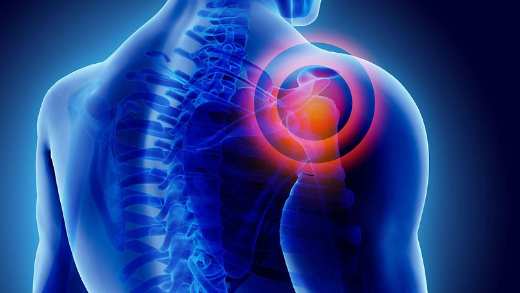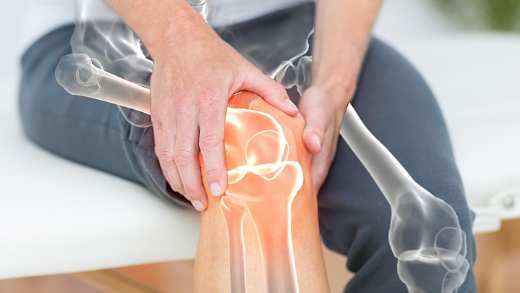Inflammatory back pain, or Axial Spondyloarthritis, is a type of inflammatory arthritis that affects the spine, the sacrum, the pelvis joints and tendons in the arms and legs.
IPRS Health, a provider of Occupational Health and Rehabilitation services, believe that knowing the facts can help you to manage the symptoms of inflammatory back pain.

What is Axial Spondyloarthritis?
Axial Spondyloarthritis is an autoinflammatory condition, meaning the body’s inflammatory system is mistakenly targeting and attacking its own tissues. Axial Spondyloarthritis affects 1 in 200 of adults in the UK .
Axial Spondyloarthritis is rare and is very different to the more commonly known osteoarthritis. If you have osteoarthritis of the spine, you might find the information on mechanical back pain helpful.
Axial Spondyloarthritis is an umbrella term, meaning there’s a whole spectrum of disease that can fall under it.
Common types of Axial Spondyloarthritis include:
- Ankylosing Spondylitis.
- Psoriatic Arthritis.
Who does it most commonly affect?
- Younger people with symptoms starting before the age of 45.
- Men and women in roughly equal numbers.
Although rare, these are long-term conditions that require specific treatment and management and it’s important that these conditions are diagnosed quickly.
If left untreated, inflammatory back pain can lead to changes in the spine and sacrum - or pelvis joints - which significantly affects movement and how you function in your day-to-day life. Pain can also continue to worsen if the right management or treatment is not started.
What are the most common symptoms of Axial Spondyloarthritis?
- Back and/or buttock pain that came on gradually and is lasting more than 3 months.
- Symptoms that are worse in the early morning.
- Stiffness in your back lasting longer than 30 minutes in the morning.
- Waking in the early hours of the morning with back pain and/or stiffness.
- Pain that improves with activity and not with rest.
- Pain that improves with anti-inflammatories such as Ibuprofen or Naproxen.
- Problems with your tendons such as the Achilles tendon (at the back of the ankle), plantar fasciitis (sole of foot pain) or tennis elbow (tendons at the elbow).
- Fatigue or tiredness.
Although rare, these are long-term conditions that require specific treatment and management and it’s important that these conditions are diagnosed quickly.
If left untreated, inflammatory back pain can lead to changes in the spine and sacrum - or pelvis joints - which significantly affects movement and how you function in your day-to-day life. Pain can also continue to worsen if the right management or treatment is not started.
Do other conditions make you more likely to have inflammatory back pain?
Some people who have a diagnosis of Ulcerative Colitis or Crohns Disease develop inflammatory back pain in the years following diagnosis. Some people who have Acute Uveitis (eye inflammation) may also develop it .
Can genetics play a role?
People with an immediate relative (such as a parent, sibling or child) with the conditions below, are more likely to develop Axial Spondyloarthritis than those without family history.
- Axial Spondyloarthritis.
- Ulcerative Colitis.
- Crohns Disease.
- Uveitis.
What to do if you think you have Axial Spondyloarthritis
If you’re concerned that you may have Axial Spondyloarthritis, book an appointment with your GP to discuss the symptoms that you’re experiencing and how long they’ve been going on for.
Investigations for Axial Spondyloarthritis includes assessment of symptoms, blood tests, an MRI scan and referral to a rheumatologist to evaluate the results. Rheumatologists are specialists in these types of inflammatory arthritis and are the best people to make the diagnosis and begin treatment as soon as practically possible.
Treatment
Currently there's no cure for Axial Spondyloarthritis. However, treatments have vastly improved over the last few years and many patients now return to full function or get to a place where their symptoms have little impact on their lives. Medication to reduce inflammation is necessary for most people with Axial Spondyloarthritis, but your prescription will be dependent on a number of individual factors.
Helpful lifestyle factors
- Exercise regularly.
- Avoid smoking.
- Eat a balanced diet.
- Maintain a healthy body weight.
This content is provided solely by IPRS Health. Although IPRS Health is a health and wellbeing company, the information contained within this article does not represent any form of assessment, diagnosis, or treatment by IPRS Health for a medical condition. Any exercise-based content is not specific or prescribed by IPRS Health for your medical condition. If you follow any exercise programme or advice contained within this article, you do so at your own risk and IPRS Health have no liability for any subsequent damage, loss, or injury. IPRS Health recommend that you seek advice from a physiotherapist or healthcare professional before starting any new exercise regime. If you are experiencing back pain or discomfort, please seek medical advice in the first instance.
















